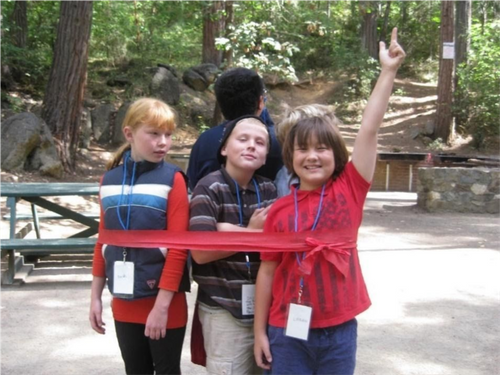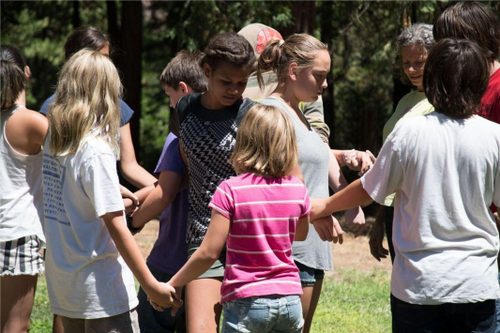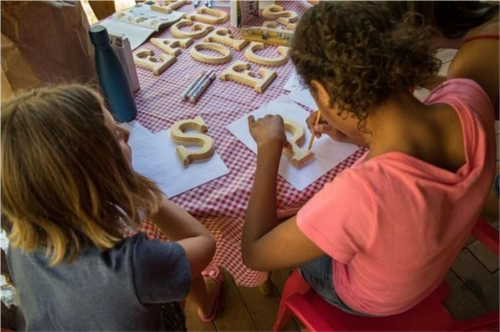Climate Change Agents Camp, Nevada County




Climate Change Agents in California
A weeklong overnight camp to integrate habits-of-heart, research and assistance with climate impacts near and far began in 2014. Nevada County Climate Action Now (NC-CAN) launched the camp and co-sponsors it with Full-Circle Learning.
Above, students practiced cooperation skills in 2014. Below, Zach and Kaiden applied architectural skills to an ethical Village in 2016.
Climate Change Agents studied water issues in 2017.
Projects included simulations of a watershed, watershed management studies and clearing a flood plain, among other things. At right, Jessica Rivenes examined the engineering of a permeable sidewalk.
Through annual themes linking a climate change impact to a life skills goal, the Change Agents, by 2020, had helped their community and those of wisdom exchange partners apply local and global solutions to the impacts of drought, food insecurity, sea rise, weather extremes, wildfire, and habitat loss. They also helped a community shift toward renewable energies. Their integrated service-learning projects aimed at community transformation, both local and global. Multiple environmental organizations help fund the camp, which is completely scholarship-based. While addressing the impacts of wildfire in the photos above, students used trigonometry to conduct a carbon count and practiced bridging conflicts among forest managers. They also taught the public how to manage PTSD after a fire. Below, they prepared elements of a League of Species project.
These photos feature the significance of “wisdom exchanges,” with Ana Maria assisting Pax with his clinometer, Jamie Ervin leading forestry activities, and Vanuatuan scholarship recipient Rossana Kalulu joining a project after offering creative water catchment options from her country.

